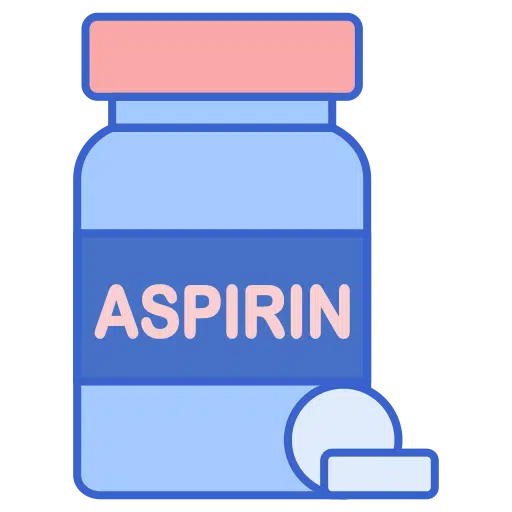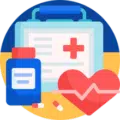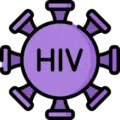by Kyuhwan Tae, PharmD Candidate and Joseph Walter, PharmD, BCPS

History of Aspirin Use for Primary Prevention
According to a 2019 National Institute of Health survey, about 29 million people in the United States with no history of cardiovascular disease take aspirin daily for primary prevention. And 6.6 million do so without a recommendation from a health care provider.1 Aspirin’s efficacy for secondary prevention is supported by many clinical trials, but when looking at aspirin’s efficacy for primary prevention, the data has not definitively demonstrated that the benefits outweigh the risks.2-3 Studies before the turn of the century using aspirin 325mg once daily for primary prevention showed mixed results but clearly increased the risk of bleeding.3 However, when the dose was reduced to aspirin 81mg daily, some studies suggested that high-risk patients with hypertension, diabetes, and other cardiovascular risk factors might benefit from low-dose aspirin. Thus, several guidelines began to recommend low-dose aspirin for primary prevention.2-3
The 2019 ACC/AHA guidelines suggested low-dose aspirin therapy (75-100 mg orally daily) be considered for primary prevention in healthy adults aged 40 to 70 years of age who are at high risk of ASCVD events but at low risk for bleeding.4 The guidelines recommend against the use of aspirin for primary prevention in those greater than 70 years of age due to an increased risk of bleeding.4 The 2016 United States Preventive Services Taskforce (USPSTF) also recommended initiating low dose aspirin for the primary prevention in adults aged 50-59 years of age who have at least a 10% risk of an ASCVD event in 10-years and to consider aspirin use based on an individual risk/benefit assessment for patients 60-69 years of age with a 10% or greater 10-year ASCVD risk score.5 New data published in the past 3 years have altered these recommendations.
Updated USPSTF Recommendations and Trials
In late 2021, the USPSTF updated its recommendations for aspirin when used for the primary prevention of CV events. The USPSTF now suggests that aspirin be considered in patients 40-59 years based on an individual risk/benefit assessment but only in those with at least a 10% or greater ASCVD risk of a CV event in the next 10 years.6 For those age 60 and older, the USPSTF now recommends against the use of low-dose aspirin for primary prevention.
These recommendations are based in part on three recently published clinical trials: ASPREE, ARRIVE, and ASCEND. The three trials enrolled more than 36,000 patients, age 40 and older, who were at high risk of CV events and evaluated low dose aspirin versus placebo use for primary prevention. Overall, the studies found that aspirin use modestly decreased the absolute risk of non-fatal and fatal myocardial infarction when compared to placebo but did not reduce mortality. All three studies (independently) documented an increased risk of major bleeding events, especially in adults older than 60 years of age. 3,7-8
In support of the USPTF recommendation to avoid aspirin use for primary prevention in those age 60 and older, the ASPREE and ARRIVE trials provide the most compelling data.7 The ASPREE trial enrolled older adults, 65 years and older, and found no difference (low-dose aspirin versus placebo) in all-cause mortality but a significant increase in intracranial and extracranial hemorrhages (1.38,95% CI 1.18–1.62; p<0·001).7 The ARRIVE trial looked at men 55 years and older with 2 or more cardiovascular risk factors and women 60 years and older with 3 or more cardiovascular risk factors.8 Here too the results show no difference in the composite primary endpoint of cardiovascular death, myocardial infarction, unstable angina, stroke, and transient ischemic attacks when comparing low-dose aspirin to placebo.8 But there was a significant increase in the rate of gastrointestinal bleeding (2.11, 1.36–3.28; p=0·0007) in those taking aspirin.8
The USPSTF constructed a micromodel to simulate how low-dose aspirin would be tolerated for 10-20 years.5 They found that the net benefit of low dose aspirin therapy is significant in younger adults aged 40-59 years but there was a net harm in adults 70 years of age and older.5 These data influenced the USPSTF to lower the age range when aspirin might be considered for primary prevention from 50-59 years to 40-59 years old.6,8
Pharmacist’s Role in Screening Aspirin Use and Educating Patients as well as Healthcare Professionals
Given these new data and updated recommendations, there is an urgent need to re-educate health care professionals and patients regarding the risks of aspirin. In many cases, the risks outweigh the benefits for primary prevention, particularly in older adults.2,6 This is a great opportunity for pharmacists to intervene and advise healthcare professionals (physicians, nurses, nurse practitioners, physician assistants) and patients to re-evaluate aspirin use. Pharmacists should first start by identifying inappropriate aspirin use, especially in patients 60 years and older.6 In the community setting, pharmacists can ask and screen patients if they take aspirin as many people purchase aspirin on their own, over the counter, without an explicit recommendation from a health care provider. In the inpatient setting, a thorough medication reconciliation can identify inappropriate aspirin use. A 2021 study investigated prescribing patterns for aspirin in teaching hospitals and defined appropriate aspirin use based on 10-year ASCVD risk scores for primary prevention. The investigators found that 23% of patients were on aspirin with no indication or recommendation.10
Once inappropriate aspirin use is identified, pharmacists should then take the time to educate healthcare providers and patients from a risk/benefit perspective.4,6 Many patients (and prescribers) may be reluctant to stop aspirin therapy. Pharmacists can explain why aspirin use may no longer be beneficial. The widespread use of statins for primary prevention has substantially reduced cardiovascular risk and thus aspirin use may be less beneficial than it once was.3 In addition, fewer people smoke and more people are receiving treatment for high blood pressure, all of which reduces the incidences of myocardial infarction, stroke, and CV death. While the benefits of aspirin when used for primary prevention appear to have diminished, the risk of bleeding has not. And the risk of major bleeding events is substantial in older adults as evidenced by the newer trials.3,6-8
But can pharmacists really make a difference? The answer is an unequivocal YES! A recent study examined the benefits of a pharmacist-led service where they identified potentially inappropriate medications using screening tools, like the Beer’s criteria.11 Aspirin used for primary prevention in older adults was among the inappropriate medications the pharmacists screened for.11Among the 87 patients enrolled in this small study, 6 patients discontinued aspirin therapy.11 These data suggest that 5-10% of older adults are taking aspirin unnecessarily. Multiply that by millions of older adults in the United States … or the 100’s of older adults in your practice … and that becomes a very large number!
Conclusion
Recent updates to the USPSTF recommendations regarding the use of aspirin for the primary prevention of ASCVD events based on the newer studies offers challenges and opportunities for pharmacists. Pharmacists play an integral role by routinely asking about aspirin use and screening for inappropriate use. Many patients may have initiated aspirin therapy in their 40’s and 50’s but continue to take it into their 60’s and 70’s. Prescribers need to be alerted when their patients continue to use aspirin. This is a key opportunity to de-prescribe.
References- National Institute of Health. NIH Research Matters. URL: https://www.nih.gov/news-events/nih-research-matters/aspirin-use-may-be-widespread-despite-new-guidelines [Accessed 28 Dec 2021].
- Ittaman SV, VanWormer JJ, Rezkalla SH. The role of aspirin in the prevention of cardiovascular disease. Clin Med Res. 2014;12:147-154.
- Raber I, McCarthy CP, Vaduganathan M, et al. The rise and fall of aspirin in the primary prevention of cardiovascular disease. Lancet. 2019;393(10186):2155-2167.
- Arnett DK, Blumenthal RS, Albert MA, et al. 2019 ACC/AHA Guideline on the Primary Prevention of Cardiovascular Disease: A Report of the American College of Cardiology/American Heart Association Task Force on Clinical Practice Guidelines. Circulation. 2019; 140:596-e646.
- Dehmer SP, Maciosek MV, Flottemesch TJ. Aspirin Use to Prevent Cardiovascular Disease and Colorectal Cancer: A Decision Analysis. Rockville (MD): Agency for Healthcare Research and Quality (US); September 2015.
- United States Preventative Services Task Force. URL: https://www.uspreventiveservicestaskforce.org/uspstf/draft-recommendation/aspirin-use-to-prevent-cardiovascular-disease-preventive-medication#bootstrap-panel–9 [Accessed 28 Dec 2021].
- McNeil JJ, Nelson MR, Woods RL, et al. ASPREE Investigator Group (2018). Effect of Aspirin on All-Cause Mortality in the Healthy Elderly. N Engl J Med. 2018; 379: 1519–1528.
- Gaziano JM, Brotons C, Coppolecchia R, et al. Use of aspirin to reduce risk of initial vascular events in patients at moderate risk of cardiovascular disease (ARRIVE): a randomised, double-blind, placebo-controlled trial. Lancet. 2018;392(10152):1036-1046.
- O’Brien CW, Juraschek SP, Wee CC. Prevalence of Aspirin Use for Primary Prevention of Cardiovascular Disease in the United States: Results From the 2017 National Health Interview Survey. Ann Intern Med. 2019 Oct 15; 171:596-598.
- Almalki S, Alhossan A, Alrumayyan B, et al. Aspirin prescribing pattern and guidelines-adherence evaluation for primary prevention of cardiovascular diseases at a teaching hospital. Saudi Pharm J. 2021;29:1426-31.
- Whitman A, DeGregory K, Morris A, Mohile S, Ramsdale E. Pharmacist-led medication assessment and deprescribing intervention for older adults with cancer and polypharmacy: a pilot study. Support Care Cancer. 2018;26:4105-13.





 iForumRx.org is a web-based community of practice designed to inform ambulatory care pharmacy specialists, pharmacy residents, and student pharmacists about high-quality, practice-changing evidence.
iForumRx.org is a web-based community of practice designed to inform ambulatory care pharmacy specialists, pharmacy residents, and student pharmacists about high-quality, practice-changing evidence.